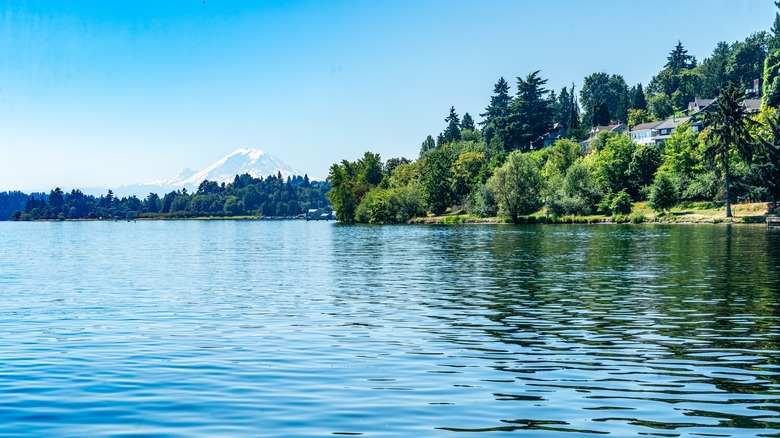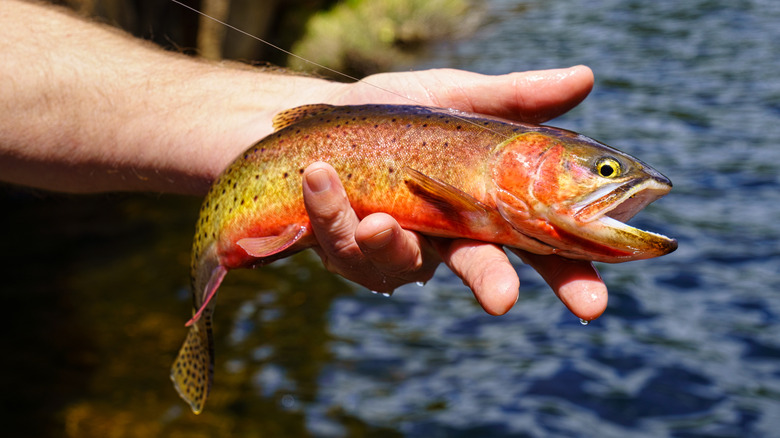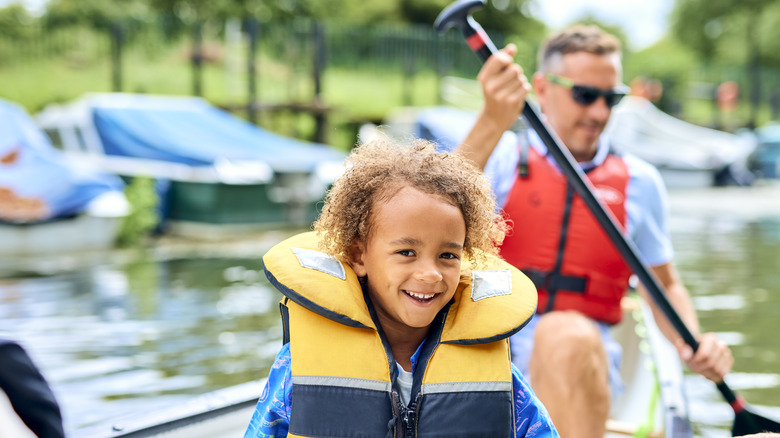One Of Washington's Popular Lakes Is More Dangerous Than Visitors Realize
Stretching between Seattle and Bellevue is the gorgeous Lake Washington, known for being the second-largest natural lake in Washington State and as a hotspot for boating, fishing, and other forms of watersports. It attracts visitors from across the state year-round and is especially popular during the summer months, as one of the most incredible West Coast lakes for swimming. Despite being a stunning destination, Lake Washington is actually far more dangerous than most people realize. Between cold water and bacteria levels, there are important things for you to know before visiting.
Public health officials and water safety experts alike caution that even during warm summer weather, the lake's water temperatures can remain dangerously cold. If these temperatures drop below 60 degrees Fahrenheit (or 15 degrees Celsius), this has the potential to trigger cold water shock, a condition that can incapacitate even the strongest of swimmers in just minutes. Between 2018 and 2024, King County (where Lake Washington is located) saw an average of more than 27 preventable drowning deaths each year, with more than half of these (53%) occurring in open waters, according to the King County government website.
The Pacific Northwest is one of the best places to visit in America thanks to the great weather and beautiful nature attractions, especially in the summer. When the weather is warm, people flock to cool lakes here to enjoy nature and outdoor activities, such as kayaking and paddleboarding. Of course, watersports can pose a risk of falling into the lake. According to Washington State Parks, falling into cold water can induce four different stages of harm, each of which can be deadly. These include the initial phase of cold water shock, swim failure, hypothermia, and circum-rescue collapse (risks that occur even after you've been rescued).
Toxic chemicals in Lake Washington
Unfortunately, the extremely low temperatures are not the only thing that makes Lake Washington so dangerous. In the early to mid-1900s, 10 small sewage-treatment plants discharged 20 million gallons of waste into Lake Washington every day, according to King County's website. In the 1950s, scientists began to suspect that this phosphorus-rich waste could be damaging to the lake. An official King County study of core samples showed that PCBs and other industrial toxins peaked during the mid-20th century, but have steadily been on the decline since bans on these toxic chemicals were introduced in the 1970s.
Among the chemicals found in Lake Washington are cadmium, chromium, lead, mercury, and nickel, which can be detrimental to wildlife that lives in the area. This means that if you plan on fishing in Lake Washington, you could be exposing yourself to these chemicals by eating your catch. Luckily, you can swim in Lake Washington thanks to declining bacteria levels, but always keep an eye out for any water quality advisories.
Staying safe when visiting Lake Washington
This gorgeous lake may not be the only dangerous natural attraction in Washington State, but it can still be very deadly, especially if you're not well prepared. It's particularly important to stay safe when visiting Lake Washington, and it's easy to do this by following general safety precautions. Be sure to wear life vests or life jackets, especially when taking part in open-water sports such as kayaking, paddleboarding, and boating, even if you consider yourself to be a strong swimmer. Avoid drinking alcohol by the lake and before visiting to ensure you're in control and can keep yourself and those around you safe by making smart decisions. If you plan on swimming, ensure that you notify someone of your plans, and if you're traveling with family, be sure to supervise children and pets closely at all times.
There are also plenty of online resources you can review to ensure you're staying safe when visiting the lake. The National Center for Coldwater Safety contains information about cold water, helpful advice on acclimation, cold water myths, cold water gear recommendations, and a list of other useful resources. Above all, staying on the shores and relaxing in the sun is the safest way to enjoy your time at Lake Washington — provided you pack your sunscreen, of course!


